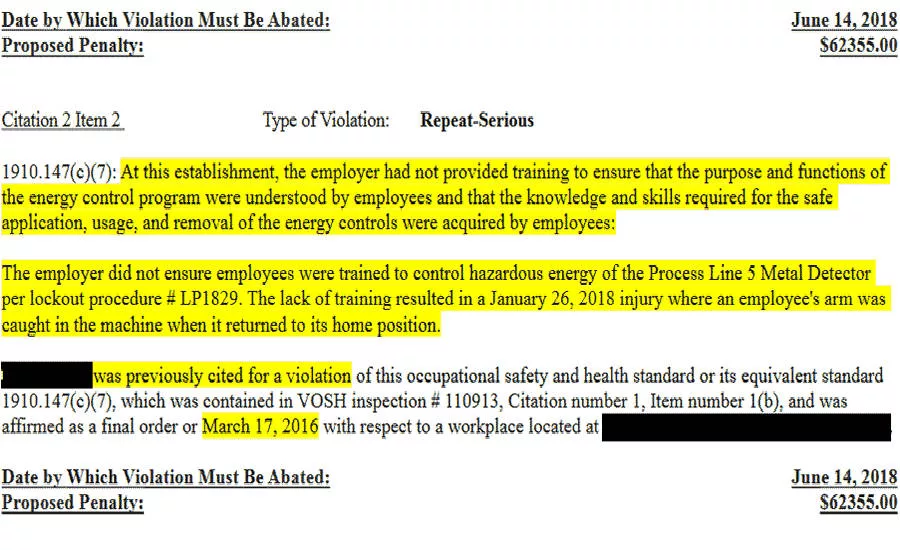Plant Safety
Virginia plant cited for repeat safety violations
Training lapses, lack of inspections lead to repeat violations

The state of Virginia’s Occupational Safety and Health Program has issued seven citations and $187,000 in penalties to a food and beverage company after a worker’s arm was caught in a conveyor near the metal detector.
Inspectors found that the company failed to inspect energy control procedures annually, train workers on the control of hazardous energy and provide adequate machine guarding. Worse yet, the company had been cited for these violations in 2016.
Today, virtually all modern plant equipment has emergency stop (E-stop) switches, energy cut-out capabilities and built-in safety and machine guarding systems to prevent injuries. There is even NFPA-approved equipment to automate the process of proving power is removed from dangerous equipment. However, it’s still incumbent on managers to provide adequate and regularly scheduled training for operators to use these tools, because it’s human nature to ignore safety measures and systems—as it takes more time to put them in place than to just dig in and try to fix a “live” machine when it has a problem.
As Mike Miller, senior director-employee health & safety at Dean Foods Co., said in a May 2012 FE article, “Plant Safety: Implementing a continuous improvement mindset,” Fencing and technology won’t protect workers if they circumvent safeguards or place themselves in harm’s way. Equipment failures, inadequate guarding and disregard for lock out/tag out (LOTO) procedures account for a small fraction of workplace injuries.
“About 92 percent of accidents involve decisions that either leadership or employees make,” Miller added. While physical safety infrastructure can be modified to be safer, the focus should be on changing the way workers perform tasks. And that’s where behavior modification and training are a must on a regular basis.
As the violation notice above shows, “The lack of training resulted in a January 26, 2018 injury where an employee’s arm was caught in the machine when it returned to its home position.” What makes the matter worse is that the processor should have instituted an on-going training schedule for machine safety after having had the same violation two years earlier.
Looking for a reprint of this article?
From high-res PDFs to custom plaques, order your copy today!









